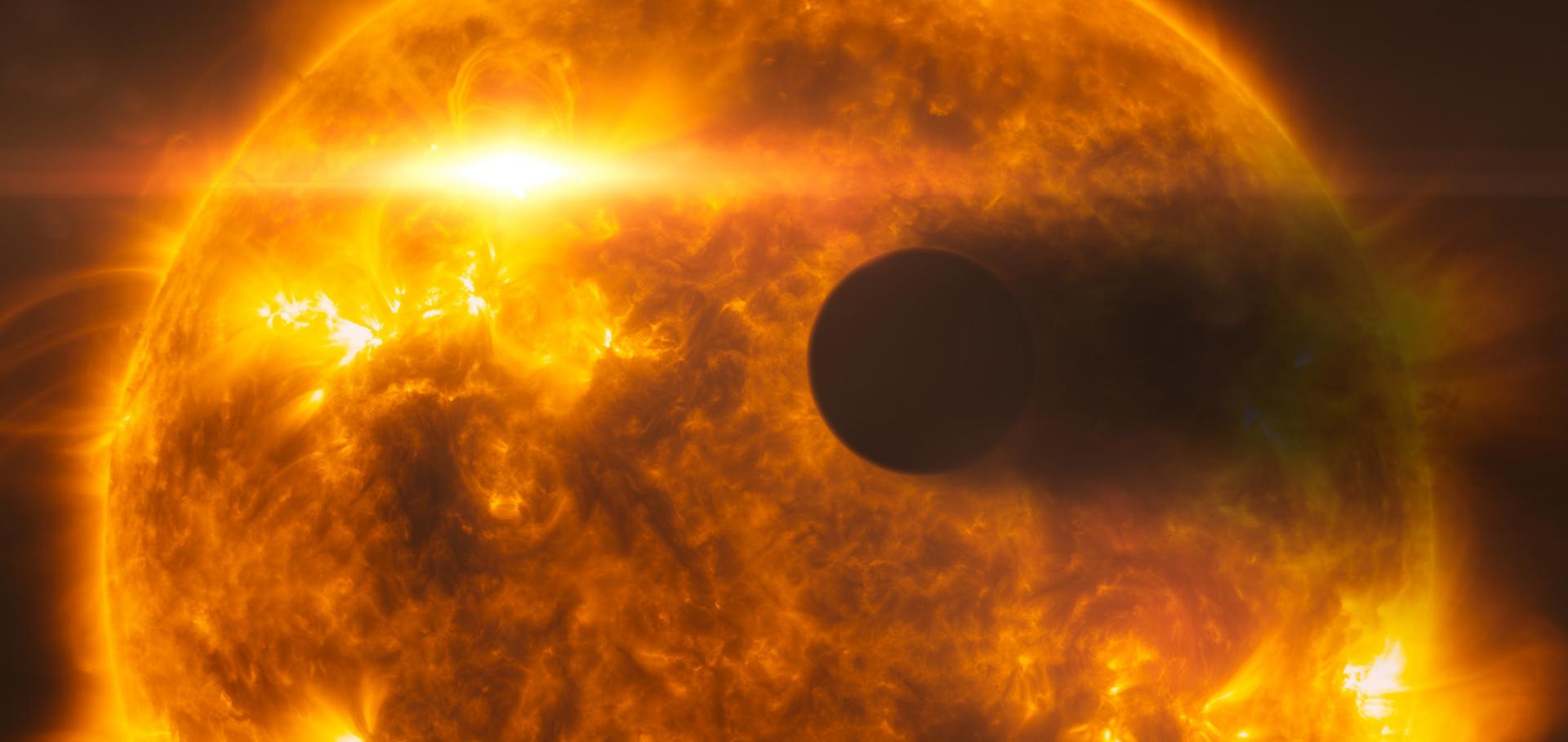Photospheric activity and rotation of the planet-hosting star CoRoT-Exo-4a
(2009)
An iterative filter to reconstruct planetary transit signals in the presence of stellar variability
Monthly Notices of the Royal Astronomical Society 397:3 (2009) 1591-1598
Abstract:
The detrending algorithms which are widely used to reduce the impact of stellar variability on space-based transit surveys are ill-suited for estimating the parameters of confirmed planets, as they unavoidably alter the transit signal. We present a post-detection detrending algorithm, which filters out signal on other time-scales than the period of the transit while preserving the transit signal. We compare the performance of this new filter to a well-established pre-detection detrending algorithm, by applying both to a set of 20 simulated light curves containing planetary transits, stellar variability and instrumental noise as expected for the CoRoT space mission, and performing analytic fits to the transits. Compared to the pre-detection benchmark, the new post-detection filter systematically yields significantly reduced errors (median reduction in relative error over our sample ∼40 per cent) on the planet-to-star-radius ratio, system scale and impact parameter. This is particularly important for active stars, where errors induced by variability can otherwise dominate the final error budget on the planet parameters. Aside from improving planet parameter estimates, the new filter preserves all signal at the orbital period of the planet, and thus could also be used to search for light reflected by the planet. © 2009 RAS.Magnetic activity in the photosphere of CoRoT-Exo-2a Active longitudes and short-term spot cycle in a young Sun-like star
Astronomy and Astrophysics 493:1 (2009) 193-200
Abstract:
Context. The space experiment CoRoT has recently detected transits by a hot Jupiter across the disc of an active G7V star (CoRoT-Exo-2a) that can be considered as a good proxy for the Sun at an age of approximately 0.5 Gyr.Aims. We present a spot modelling of the optical variability of the star during 142 days of uninterrupted observations performed by CoRoT with unprecedented photometric precision.Methods. We apply spot modelling approaches previously tested in the case of the Sun by modelling total solar irradiance variations, a good proxy for the optical flux variations of the Sun as a star. The best results in terms of mapping of the surface brightness inhomogeneities are obtained by means of maximum entropy regularized models. To model the light curve of CoRoT-Exo-2a, we take into account the photometric effects of both cool spots and solar-like faculae, adopting solar analogy.Results. Two active longitudes initially on opposite hemispheres are found on the photosphere of CoRoT-Exo-2a with a rotation period of 4.522 ± 0.024 days. Their separation changes by ≈80° during the time span of the observations. From this variation, a relative amplitude of the surface differential rotation lower than ∼ percent is estimated. Individual spots form within the active longitudes and show an angular velocity ∼ percent lower than that of the longitude pattern. The total spotted area shows a cyclic oscillation with a period of 28.9 ± 4.3 days, which is close to 10 times the synodic period of the planet as seen by the rotating active longitudes. We discuss the effects of solar-like faculae on our models, finding indications of a facular contribution to the optical flux variations of CoRoT-Exo-2a being significantly smaller than in the present Sun. Conclusions. The implications of such results for the internal rotation of CoRoT-Exo-2a are discussed, based on solar analogy. A possible magnetic star-planet interaction is suggested by the cyclic variation of the spotted area. Alternatively, the 28.9-d cycle may be related to Rossby-type waves propagating in the subphotospheric layers of the star. © 2008 ESO.The Monitor project: Rotation periods of low-mass stars in M50
Monthly Notices of the Royal Astronomical Society 392:4 (2009) 1456-1466
Abstract:
We report on the results of a time-series photometric survey of M50 (NGC 2323), a ∼130 Myr open cluster, carried out using the Cerro Tololo Inter-American Observatory (CTIO) 4-m Blanco telescope and Mosaic-II detector as part of the Monitor project. Rotation periods were derived for 812 candidate cluster members over the mass range 0.2 ≲ M/M⊙ ≲ 1.1. The rotation period distributions show a clear mass-dependent morphology, statistically indistinguishable from those in NGC 2516 and M35 taken from the literature. Due to the availability of data from three observing runs separated by ∼10 and 1 month time-scales, we are able to demonstrate clear evidence for evolution of the photometric amplitudes, and hence spot patterns, over the 10 month gap. We are not able to constrain the time-scales for these effects in detail due to limitations imposed by the large gaps in our sampling, which also prevent the use of the phase information. © 2008 RAS.Accuracy of stellar parameters of exoplanet-host stars determined from asteroseismology
ASTRONOMY & ASTROPHYSICS 506:1 (2009) 153-158


